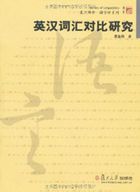迷路
中西文化
在问路之前,应先向对方说声“Excuse me”、“Beg your pardon” 或 “Pardon”,这样既显得有礼貌,又可引起对方的注意;问路时,切勿急步向人走去,并且应当和对方保持适当距离,千万不要碰触对方,说话也不要过急、过快,尽量不要使用手势。
典型对话
1.寻 路 去 市 场
A:Can you help me? I'm lost. Is the clothes market near here?
A:可以请您帮个忙吗?我迷路了。这附近有服装市场吗?
B:Yeah. Walk down this street. Then take the second right, and you will find it.
B:对,沿着这条路走,在第二个路口处向右转,就看见了。
A:Thanks a lot.
A:多谢。
2.寻 路 去 宾 馆
A:I seem to be lost. Can you tell me the way to the Friendship Hotel?
A:我好像迷路了。您能告诉我去友谊宾馆怎么走吗?
B:Oh, it's far from here. You can take bus number 7 to get there.
B:哎呀,友谊宾馆离这儿很远啊。你可以乘7路公交车过去。
A:Thanks.
A:谢谢。
3.寻 路 回 家
A:What's wrong, little boy?
A:小朋友,你怎么了?
B:I have lost my way.
B:我迷路了。
A:Where do you want to go?
A:你想去哪儿啊?
B:I want to go home. I live near the Zhongshan Park.
B:我想回家,就在中山公园附近。
4.寻 路 去 商 场
A:Excuse me. I can't find my way to the shopping mall.
A:劳驾。去购物中心怎么走?
B:You can take the subway. It's only ten minutes from here.
B:你可以乘地铁去。十分钟就到了。
A:Much obliged.
A:多谢您了。
5.寻 路 去 博 物 馆
A:Can I help you? What's up?
A:我能帮忙吗?发生什么事了?
B:I think I've gotten lost.
B:我想我迷路了。
A:Where do you want to go?
A:你要去哪儿啊?
B:The Military Museum. Should I take a bus to get there?
B:军事博物馆。我需要乘车去那儿吗?
A:No, it's very close to here. Go along this road and take the first right. You can't miss it.
A:不用,就在附近。沿着这条路走,第一个路口向右拐就能看见了。
B:Thank you so much.
B:非常感谢您。
6.辨 明 方 向
A:Which road should we take?
A:我们应当走哪条路呢?
B:I'm a bit confused. There are so many small roads.
B:我都被搞糊涂了。有这么多岔路。
A:Indeed there are.Jack, come here and help me.
A:就是。 杰克,过来帮帮我。
C:What's up?
C:怎么了?
A:I'm having trouble reading this map. I'm so puzzled. Which direction should we go? Where am I now?
A:我看不懂这地图。我都糊涂了,我们应该往哪个方向走啊?我现在在哪儿?
C:You're in the Qiushi Mansion.
C:你是在求实大厦里。
A:Thank you.
A:谢谢。
7.识 别 位 置 (1)
A:What street am I on?
A:我这是在哪条街上?
B:This is Sun Street.
B:这是阳光大街。
A:And where can I find a restroom?
A:那卫生间在哪儿?
B:Walk down the street and turn right at the first light, you won't miss it.
B:沿街一直往前走,第一个交通灯处向右转,你会找到的。
8.识 别 位 置 (2)
A:Where are we now?
A:我们现在是在什么地方呢?
B:Oh! I don't know. We're completely lost.
B:啊!我不知道,我们完全迷路了。
A:Oh, here comes a police officer. Let's ask him.
A:哦,一位警察过来了,我们去问问他。
B:OK. Excuse me. May I ask where we are now?
B:好啊。对不起,请问我们现在是在什么地方?
C:Yes, you're right in the middle of the Fifth Avenue vegetable market.
C:你们就在第五街的蔬菜市场里。
9.寻 路 回 宾 馆
A:Excuse me, officer, which way shall I take? I want to go back to the Beijing Hotel.
A:对不起,警官。我想回北京饭店,我该走哪条路?
B:Take the right one and go ahead and it will take you five minutes. You can't miss it.
B:走右边这条路,一直朝前走,只要五分钟你就到了。
A:Thank you.
A:谢谢您。
10.向 警 察 求 助
A:Excuse me, officer. Can you help me?
A:打扰了,警官,您能帮助我吗?
B:Sure.
B:当然了。
A:Can you tell me how to go get to Manhattan?
A:您能告诉我怎么到达曼哈顿吗?
B:You can take the subway.
B:您可乘坐地铁。
A:Oh, I just can't figure out the subway system at all. As soon as I get underground I lose my sense of direction.
A:哦,我对地铁系统根本就搞不明白,只要我一进入地下,就会失去方向感。
B:But it's easy to get to Manhattan from here by the subway.
B:但是从这儿乘坐地铁去曼哈顿比较方便。
A:OK, do you know where the nearest subway station is?
A:好,那您知道最近的地铁站在什么地方吗?
B:It's over there across the street in front of the cinema.
B:穿过这条街,在电影院的前面。
A:Thanks a lot.
A:多谢了。
B:You're welcome.
B:不用客气。
Asking about the Location询问路线
中西文化
问路的时候尽量不要反复问。如果没听清楚,你可以把听到的关键地方再问一下,这样对方就知道自己说得太快了,也许他会再慢点对你说一遍。
在欧美国家街头问路时,绝大多数情形下都会感受到欧美国家人对陌生路人的友善和热情,甚至有些人热情得过头。当他们发现陌生的游客似乎在寻找某个目的地时,往往会主动上前询问你是否需要帮助以至提供他所能提供的最大的帮助。
典型对话
1.去 邮 局 (1)
A:Do you know where the post office is?
A:您知道邮局在哪儿吗?
B:Go straight for one block, and it is just on the left hand side.
B:直走,过一个路口,马路左边就是。
A:Thanks.
A:谢谢。
2.去 邮 局 (2)
A:Excuse me. Can you tell me how to get to the post office?
A:请问,您能告诉我邮局怎么走吗?
B:Of course. It's very near here. Go to the corner and turn left. Walk one block and turn left again. Go across the street. The post office is on the corner. You can't miss it.
B:当然可以,邮局离这儿很近。走到拐角,再往左拐。走一个街区。再往左拐。过马路,邮局就在拐角处,您不会走错的。
A:Thank you very much. I'm sure I'll find it.
A:多谢。我相信我会找到的。
B:You can't miss it.
B:您不会错过的。
3.去 超 市 (1)
A:May I help you?
A:能帮您什么忙吗?
B:Do you know where I can find a supermarket?
B:您知道哪里可以找到超市吗?
A:Take bus number 20, you can find one.
A:乘20路公交车,可以看到一个。
4.去 超 市 (2)
A:Is the Carrefour supermarket close by?
A:家乐福超市在附近吗?
B:No, you have to take a bus there. You have a long way to go.
B:不,你得乘车去那儿。路很远。
5.去 学 校
A:Can you tell me how to get to the middle school?
A:您知道如何去中学吗?
B:It's quite far. You can take a bus there.
B:挺远的,你得乘公交车去。
6.去 警 局 (1)
A:Can you show me the way to the police station?
A:您能告诉我去警局的路吗?
B:Yes, take the first right and you will find it.
B:是的,第一个路口向右拐就能看见。
A:Much obliged.
A:非常感谢。
7. 去 警 局 (2)
A:Where's Police Headquarters from here?
A:从这里到警察局怎么走?
B:Hmm. You go straight down this street.
B:恩,从这条街一直走下去。
A:On this side?
A:在这一边吗?
B:Right. And you'll hit a big intersection.
B:对,您会到达一个很大的十字路口。
A:Got it.
A:懂了。
B:Cross that and keep going straight to the next light.
B:过了十字路口,一直往前走,走到下一个交通灯。
A:The very next one?
A:下一个吗?
B:Right. Along the way, you'll see the theater on the other side of the street.
B:对。沿途您会看到对面有一家戏院。
A:OK.
A:好的。
B:Now, when you get to the light, go right. It's on the corner of the next block.
B:嗯,到红绿灯那里,向右转。在下一条街的转角。
A:You mean right to the Taipei Hilton Hotel?
A:您是指在台北希尔顿饭店旁边吗?
B:Right. It's right across the street.
B:对。就在对面。
8.去 商 场
A:Can you tell me how I can get to the Friendship Shopping Center?
A:你能告诉我如何去友谊商场吗?
B:Go straight for about ten minutes.
B:直走大约十分钟就是。
9.去 酒 店
A:Could you tell me the way to the New Century Hotel?
A:您能告诉我去新世纪酒店的路吗?
B:There is no direct bus from here, but you can take the subway to get there.
B:这儿没有直达的公共汽车,你可以乘地铁到那儿。
10.去 广 场
A:What's the best way to get to the Times Square?
A:哪一条是去时代广场最好的路?
B:Take bus Number 7, that's the fastest way.
B:乘7路车,那是最快的。
11.去 银 行
A:If I want to remit some money, where should I go?
A:汇款应当去哪儿?
B:It depends. You can go to a bank or you can use a post office.
B:不一定。既可以去银行,也可以去邮局。
A:Where can I withdraw money?
A:哪里可以提款?
B:You can go to the bank, or you can withdraw it from an ATM.
B:可以去银行,也可以在自动提款机上提款。
12.去 公 司
A:Is there a company named ABC in this district?
A:在这附近有一个ABC公司吗?
B:Sorry, I'm a stranger here myself. You could try asking the policeman standing there.
B:抱歉,我也是新来的。你应该去问一下交警。
A:OK, thanks a lot.
A:好的,非常感谢。
13.去 公 司 部 门
A:Excuse me. Can you direct me to the toy department, please?
A:打扰一下,请你告诉我到玩具部门怎么走好吗?
B:It's on the 7th floor. As you get out of the elevator, you'll see it on your left.
B:在7楼。出电梯后,就在你的左边。
A:Can you direct me to the elevator?
A:你能告诉我电梯在哪里吗?
B:Sure. Go straight ahead and you'll walk into it.
B:当然,往前直走,你就可走进电梯间了。
A:Thank you.
A:谢谢。
B:You're welcome
B:不用客气。
14.去 饭 店 (1)
A:Excuse me, sir. But could you tell me the nearest way to Beijing Hotel?
A:打扰一下,先生,你可以告诉我到北京饭店最近的路怎么走吗?
B:Beijing Hotel? Just go down the Street and take the third turning on the right. The hotel is at the end of that street.
B:北京饭店? 沿着这条街道,在第三个路口向右拐。饭店就在街道的尽头。
A:How long will it take to get there?
A:去那儿得多长时间?
B:About 10 minutes.
B:大约得走10分钟。
A:Thanks a lot.
A:多谢。
15.去 饭 店 (2)
A:Pardon, I'm trying to find the Lanxing Hotel? How can I get there?
A:劳驾,我在找兰兴饭店,该怎么走?
B:Hold on down this street until you come to a bank and then ask again.
B:顺这条街,一直走到有一个银行的地方,然后再问一下。
A:Can I walk to there?
A:能步行到那儿吗?
B:No. It's too far on foot.
B:步行路太远。
A:Can I take a bus?
A:能乘公共汽车吗?
B:You'd better take a taxi because there's no direct bus here.
B:你最好打的,因为这里没有直达的公共汽车。
A:Thanks a lot.
A:多谢。
B:That's OK.
B:没什么。
16.去 市 政 厅
A:Excuse me. Can you tell me how to get to City Hall?
A:对不起,您能告诉我去市政厅怎么走吗?
B:Yes, go to the next corner and turn left onto the Center Street. Walk four blocks to Second Avenue and turn right. Walk two more blocks and you'll see City Hall on the left.
B:可以。走到下一个街,向左拐到中央街,走过四个街区到第二大街向右转。再走两个街区, 在您左边就会看到市政厅。
A:I'm sorry. I didn't follow you. Could you please repeat that?
A:对不起,我没听清您的话,请您再说一遍行吗?
B:Okay. First, go to the next corner and turn left onto Center Street. Then, walk four blocks to Second Avenue and turn right. Are you with me so far?
B:好吧。首先,走到下一个街时,向左拐到中央街。然后,走四个街区到第二大街再向右转。这些您听清楚吗?
A:Yes. I'm following you.
A:是的,我正听着呢。
B:Then, walking two more blocks and you'll see City Hall on the left. Have you got all that?
B:然后,再走两个街区您就会在路左边看到市政厅,全部听明白了吗?
A:Yes. Now I've got it. Thanks very much.
A:是的,现在我全明白了。谢谢。
17.去 奥 运 村
A:Excuse me, could you direct me to the Olympic Village?
A:劳驾,请告诉我去奥运村怎么走?
B:Take bus No.7, that's the fastest way.
B:乘7路车,那是最快的。
A:Sorry, do you know where the bus station is?
A:抱歉,你能告诉我车站在哪吗?
B:Follow these signs. You can't miss it.
B:按照路标走,你不会走错的。
A:Is it far to walk?
A:走到那儿远吗?
B:No, it's only a couple of hundred meters.
B:只有200米远的样子。
A:Thanks.
A:谢谢。
B:Don't mention it.
B:不客气。
UnitAsking about the Direction明确方向
中西文化
问路时,若对方没能给出确切的回答或回答不知道也应表示感谢,切不可流露出责怪和不悦的神情来。问完路后,简要地表示谢意即可,不必过分客气。
典型对话
1.寻 路 向 北
A:We seem to be lost. Am I going north?
A:我们好像迷路了。我现在是在往北走吗?
B:No, you are going the wrong direction.
B:你走错方向了。
A:But I feel that we are going east. Oh, my goodness! We are indeed lost!
A:可是我觉得我们在往东走。哦,天啊,我们确实迷路了!
2.寻 路 向 南
A:May I help you?
A:能帮您什么忙吗?
B:Am I heading south? I think I am lost.
B:我在朝南走吗?我想我迷路了。
A:You are heading north.
A:你在朝北走。
3.小 巷 迷 路
A:There are so many alleys here.Which way is north?
A:这儿有那么多的小巷。哪条路是往北的?
B:It will be really bad luck if we get lost here.
B:如果我们在这儿迷路了,那可太倒霉了。
4.方 向 弄 反
A:Excuse me, I want to know if I'm headed toward town.
A:劳驾,我想知道我是否正往城里走。
B:You are heading the wrong way. It is in the opposite direction.
B:你走错路了。你应该往相反的方向走。
5.进 城 方 向
A:Excuse me, but is this the right direction to get to the town?
A:劳驾,去城里是这个方向吗?
B:Yes. The town is 20 miles away from here in this direction.
B:是的,往这个方向走,去城里有20英里。
6.去 地 铁 站
A:Excuse me, is the subway station in this direction?
A:请问,地铁站是往这个方向走吗?
B:Yes, you can continue going straight.
B:是的,继续直走就行。
7.迷 失 方 向
A:Which direction should we head? I'm completely confused now.
A:我们应当往哪个方向走?我现在彻底糊涂了。
B:Maybe we should ask for help.
B:也许我们应当问问别人。
A:I think you are right.
A:我想你是对的。
8.去 动 物 园 (1)
A:Excuse me, is the zoo in this direction?
A:劳驾,去动物园是不是往这个方向?
B:Sorry, I'm confused myself. Perhaps you can ask someone else for help.
B:抱歉,我自己也很迷糊。你可以问问其他的人。
A:Thank you all the same.
A:同样非常感谢您。
9.去 动 物 园 (2)
A:Excuse me, can you tell me the way to the zoo? It seems that I have got lost.
A:请问,去动物园的路怎么走?我好像迷路了。
B:OK. Go straight on for one block. Then turn left and go straight down that road. You will find the zoo. It is enormous.
B:哦,直行走过一个路口。左拐,然后沿着这条路继续往前走就能看见动物园了。它非常大。
A:Is it far away from here?
A:离这儿很远吗?
B:Yes, you've got a long way to go.
B:是的,远着呢。
A:Does a bus go there?
A:有公共汽车到那里吗?
B:Yes, you can take bus number 5, 6 or 9.All of them go there.
B:是的,5路,6路和9路都到。
A:How long will it take by bus?
A:乘车要用多久?
B:About half an hour.
B:大约半小时。
A:OK, thank you very much.
A:非常感谢您。
B:You are welcome.
B:不用谢。
Unable to Tell the Way无法指路
中西文化
在美国或加拿大等英语国家,见男人称“先生”,见妇女称“太太”或“小姐”。但是,这也不一定在所有场合都合适。所以,当问路时为了引起对方注意最好说 “Excuse me.”, 这句话不论男女、年龄都可用。
典型对话
1.去 医 院
A:Excuse me, can you tell me the way to the hospital?
A:对不起,您知道医院怎么走吗?
B:Sorry, I'm new around here. You can ask the person over there.
B:抱歉,我是新来的。你可以问问那边那个人。
A:OK. Thank you all the same.
A:好的,同样很感谢您。
2.去 洗 手 间
A:Can you tell me where I can find a restroom, please?
A:您能告诉我哪儿能找到洗手间吗?
B:Sorry, I really don't know. You can ask someone else for help.
B:抱歉,我确实不知道。您可以问问其他人。
3.不 熟 路 况
A:Excuse me, are you familiar with the road here?
A:请问,您熟悉这里的路况吗?
B:I'm a stranger here myself. I don't even know which way is north.
B:我自己也是新来的。我自己都找不着北了。
4.去 电 影 院
A:Excuse me, am I headed towards the cinema?
A:请问,我这是在往电影院的方向走吗?
B:Sorry, I'm also new here.
B:抱歉,我也是新来的。
5.去 公 园
A:Excuse me, is this the road to the Nature Park?
A:请问,这是去自然公园的路吗?
B:Sorry, I'm confused myself. Maybe we can ask that police.
B:抱歉,我自己也很糊涂。也许我们可以一起去问问警察。
A:OK,let's go.
A:好的,那我们去吧!
6.去 美 术 馆
A:Excuse me, is the art gallerythis direction?
A:请问,美术馆是在这个方向上吗?
B:Sorry, I have a poor sense of direction. Maybe you can find someone else to help you.
B:抱歉,我的方向感很差。你可以问问别人。
7.去 机 场
A:How do I get to the airport?
A:去机场怎么走?
B:Sorry, I have lost my way, too. I'm also trying to get to the airport.
B:抱歉,我也迷路了。我也在找去机场的路。
8.去 公 交 车 站
A:Excuse me, but is there a bus to the downtown area from here?
A:劳驾,这儿有去市区的公共汽车吗?
B:There's sure to be one.
B:肯定有。
A:But where?
A:在哪儿乘呢?
B:Well, I'm new here myself. You'd better ask the policeman over there. He'll give you all the information you want.
B:我也是刚来这儿。您最好问问那边的警察。他会把您想知道的全部告诉您。
A:Thank you.
A:谢谢。
B:You're welcome.
B:不用客气。
9.去 超 市 (1)
A:Where do I get off if I am going to Carrefour?
A:如果去家乐福,应该在哪站下?
B:Sorry, I don't know. Perhaps you could ask the conductor.
B:抱歉,我不知道。你可以问问售票员。
10.去 超 市 (2)
A:Pardon me. Can you tell me where the nearest Supermarket is?
A:劳驾,请问离这里最近的超市在哪儿?
B:Get me, sir. I'm a stranger here myself.
B:您把我难住了,先生。我对这儿不熟识。
A:Well, thank you anyway.
A:尽管如此。还是谢谢您。
C:Can I help you?
C:我能帮您什么忙吗?
A:Yes. I'm trying to locate the nearest Supermarket. I've been told it is somewhere near here, but I've been walking for quite a while and can't seem to find it.
A:是的,我正在找最近的超市。有人告诉我它在这附近。可我已经找了好一会儿了,好像找不到。
C:Oh, it's right near here. Just walk across the street and go around the corner on Green Road. Walk one block east; take a right at 20th street, then walk about half a block. It's right in the middle of the block.
C:哦,就在这儿附近。您横穿过马路,在格林大道拐角处绕过去向东走一个街区,在第二十街往右拐,然后大约走半个街区。超市就在街道中部。
A:Would you mind drawing me a little map on this piece of paper?
A:请您在这张纸上给我画个路线图好吗?
C:Yes, it is easier to follow a map.
C:好的,有路线图容易找一些。
A:Is there any landmark there?
A:那个地方有路牌吗?
C:Oh, yes. You'll see a big hen. You can't miss it.
C:有的。您会看到一个画着大母鸡的招牌。您不会找不着的。
Asking about the Vehicle to Be Taken询问乘坐交通
中西文化
别人问路时,一定要听对方讲,即使其语言表达不算地道,但只要听清楚了关键词,明白了基本意思,就应热情地予以指引。
道路有如下几种表述:
boulevard缩写为Blvd.) 林阴大道、干道
avenue缩写为Ave.大马路
street缩写为St.一般街道
lane 胡同,里弄
alley 小巷,小径
典型对话
1.乘 公 交 车 (1)
A:Which bus should I take if I want to go to the Town Square?
A:我若想去城市广场,应该乘哪路车?
B:You can take bus number 2 or bus number 10.It's not too far away.
B:既可以乘2路,也可以乘10路。不是很远。
2.乘 公 交 车 (2)
A:My hometown is just among the hills.
A:我的家乡就在这些大山之间。
B:Does a bus go there?
B:有公共汽车到那里吗?
A:Yes, but there's only one bus every day.
A:是的,但是每天只有一辆。
3.乘 公 交 车 (3)
A:Excuse me, I wonder if you can help me. I'm looking for the park.
A:请问,您能帮我个忙吗?我想去公园。
B:OK. Let me see. Cross the street. And go straight for two blocks. Then turn left. The park is just there. You can't miss it.
B:哦,让我想想。穿过这条街。直行,走过两个路口。然后左拐。公园就在那儿。你肯定能找到。
A:Is it far away from here?
A:离这儿很远吗?
B:It will take you about 20 minutes to get there.
B:大约20分钟的路吧。
A:Does a bus go there?
A:有公共汽车到那里吗?
B:Yes, you can take bus number 5.
B:有啊,你可以乘5路车。
A:OK, thank you very much.
A:非常感谢您。
B:No problem.
B:不用谢。
4.乘 公 交 车 (4)
A:Excuse me, are there any banks near here?
A:请问,附近有银行吗?
B:Yes, would you like to walk there or take a bus?
B:是的,你想走着去还是乘车?
A:How far is it from here?
A:距这儿有多远?
B:It's about 20 minutes' walk. Go along the street, and turn right at the second cross. Go straight ahead, and you will find it on your right hand. It's next to a hospital.
B:走路大约20分钟。沿着街走,在第二个路口右转。直行,在你的右手边就能看到。挨着一家医院。
A:If I want to take a bus, which bus line goes by there?
A:如果要乘车,哪一路车经过那儿?
B:You can take bus number 8.But right now, the bus will be crowded.
B:可以乘8路。但是现在公交车上肯定很挤。
A:OK, then I will walk there. Thanks a lot.
A:好的,那我走着去。非常感谢您。
B:No problem.
B:不客气。
A:By the way, am I going north now?
A:顺便问问,我现在是往北走吗?
B:Yes, you are right.
B:是的,对。
A:OK, I see. Many thanks.
A:哦,我明白了。非常感谢您。
5. 乘 公 交 车 (5)
A:Excuse me. Would you tell me where the People's Park is?
A:对不起,请问去人民公园怎么走?
B:The People's Park is located on Nanjing Road, near Ximao road, just on the opposite side of the International Hotel.
B:人民公园在南京路上,靠近西茂路,就在国际饭店对面。
A:How long will it take me to get there?
A:要走多久才能到那儿?
B:Only about twenty minutes.
B:只要20分钟左右。
A:I'm not going in wrong direction, am I?
A:我没有走错方向吧?
B:No, you aren't. Just go ahead, please.
B:您没有走错,请一直朝前走。
A:May I take a bus to get there?
A:我可以乘公共汽车去那儿吗?
B:You can take the No. 2 trolley bus to get there.
B:您可以乘2路无轨电车去那里。
A:OK. Thank you a lot.
A:太好了,谢谢。
6.询 问 乘 坐 的 交 通 工 具(1)
A:How can we get there?
A:我们怎么到那儿去?
B:You can get there either by road or by air.
B:你既可走陆路,也可乘飞机去。
7.询 问 乘 坐 的 交 通 工 具(2)
A:Where do you want to go?
A:你想去哪儿?
B:I want to go to Shanghai. What kind of transport should I take?
B:我想去上海。我应当选择哪种交通工具?
A:It would be best to go by train. It's a lot cheaper than flying.
A:你最好乘火车去,比坐飞机便宜得多。
8.询 问 乘 坐 的 交 通 工 具(3)
A:Excuse me, do you know the way to the train station from here?
A:打扰了。请问您知道从这儿去火车站的路吗?
B:Yes. You should go out of the gate and head south. When you get to Wen Hua Road at the second traffic light, you should turn left and head east. Go straight ahead until you reach Jiefang Road. Then turn right. Go straight for about 2 kilo miles and you will reach the station.
B:知道,您应该走出门口,一直向南走。当您到达文化路,在第二个红绿灯处,向左拐再一直向东走。一直向前直到解放路。接着向右转。再往前走2000米,您就能到达车站。
A:About how long will it take me to get there from here?
A:我从这儿到那儿要多长时间?
B:It depends. Are you going by bus or by car?
B:因情况而定,您是乘公共汽车去呢,还是乘出租车去?
A:It's rather confusing. I think I will take a taxi.
A:我都晕了。我想我将乘出租车。
B:Then it should take about 20 minutes.
B:那么您大概要用20分钟。
9.询 问 乘 坐 的 交 通 工 具(4)
A:Which train line goes to your city?
A:哪一辆列车是开往你所在城市的?
B:No. 2547 and it's a direct one.
B:2547,是直达列车。
10.询 问 乘 坐 的 交 通 工 具(5)
A:Excuse me, does this train go to the Bronx?
A:劳驾,请问这是开往布朗克斯的列车吗?
B:No, it doesn't. It goes to Queens. You want the Number 8 train.
B:不,不去,这是开往奎因斯的,您要坐8号车。
A:The Number 8 train? Can you tell me where I can get it?
A:8号车?您能告诉我在哪里上车吗?
B:Sure. It's on track 2.
B:当然,就在第二轨道。
A:Thanks very much.
A:多谢您了。
11.高 速 通 行
A:The village garden is so far away.
A:乡村果园离我们太远了。
B:Does the expressway go through there?
B:高速公路经过那里吗?
A:If it does, we can get there soon.
A:如果经过的话,我们很快就可以到达。
12.乘 机 场 巴 士
A:Excuse me! I'm looking for the airport bus?
A:对不起!我在找机场的巴士。
B:I think it's on the side of the road.
B:我想应该在路的另一边。
A:Oh, thanks. But the next bus leaves at 10:00. Can you tell me the best way to get to the airport?
A:哦,谢谢。但是,下一趟车10点钟开。可否请你告诉我到飞机场的最好走法?
B:If you want to ensure that you catch the plane, you'd better take a taxi to the airport.
B:如果你想保证赶上那班飞机, 你最好乘出租车去机场。















